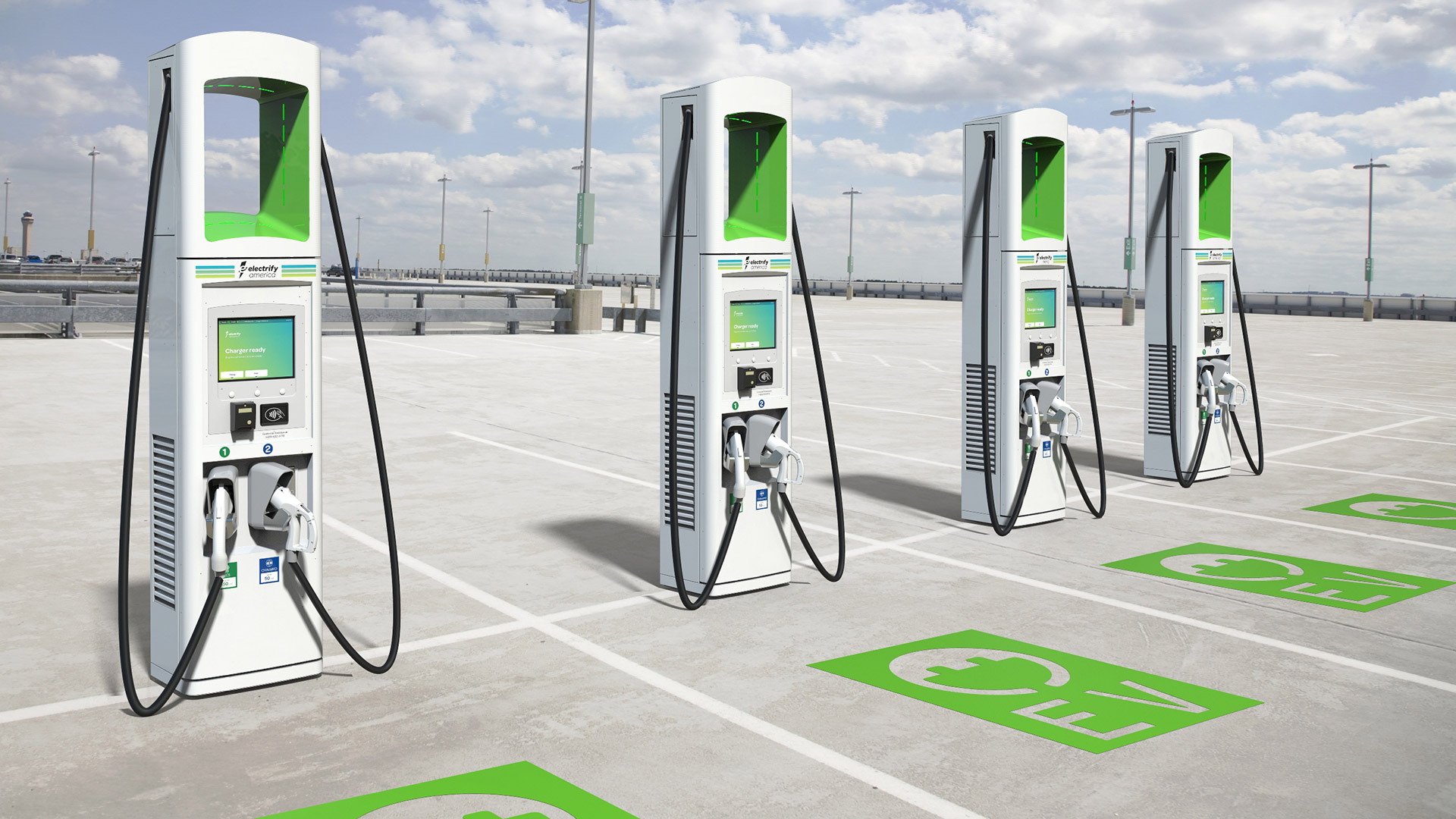The plan for a new massive network of ultra-fast networks faces challenges. But it’s on track, according to Electrify America.
I recently spoke with Giovanni Palazzo, Electrify America’s chief executive, about where things stand with Electrify America’s efforts in California and across the country. The photo above is Palazzo presenting at the 2018 Los Angeles Auto Show.
Based on multiple conversations with Palazzo and others at Electrify America, I believe the company is earnestly moving forward with its plans as quickly as possible. The company officially started building at the national level in May 2018. When I spoke with Palazzo a few weeks ago, he said, “We already have 63 stations in place on the national level.”
But the company has also encountered delays in California, opposition from competing charging networks, and hard-earned lessons about where to best install charging stations.
Despite the learning curve, Palazzo confirmed that by June 30, 2019, Electrify America expects to cumulatively have 300 stations on highways and at 184 metro stations, mostly 150 kilowatts, across the United States. “That means more than 2,000 dispensers by the end of our first cycle,” he said.
Only Two Percent Of The Job
Palazzo pointed to delays in California due to more rigorous oversight by the California Air Resources Board, as well as an onerous permitting and installation process. “The funnel to build a charging station is extremely long,” he said. “At the very beginning of a site acquisition, you go into permitting, which in California is an average of 55 days.” Palazzo said that finding the right locations that serve as highway connectors, and negotiating with site owners, can also be challenging and time-consuming.
Among its other learnings, the company discovered that it’s not cost-effective to install stations at multi-family dwellings. Instead, building 150-kW chargers at nearby metro stations, grocery stores, hospitals or schools could serve hundreds of drivers – rather than a handful of drivers living at a condo.
A November 2018 staff report from the California Air Resources Board indicated that Electrify America’s investment through 2025 would only satisfy about 2 percent of the state’s EV charging needs in the state. Palazzo agreed with that assessment.
“The same holds true at the national level – despite the $2 billion investment from Electrify America,” he told me. “If you combine our contribution with EVgo, ChargePoint, SEMA Connected, EV Box, and you name it, then you arrive at about four to six percent of the need. So the question I have to the space is: Who will cover all the rest?”


The high-power, multi-dispenser stations being installed by Electrify America are expensive by industry standards. I noticed in the company’s documentation that these stations cost as much as $1 million each to launch. Rich Steinberg, the director or marketing and green cities for Electrify America, confirmed the high cost.
When I asked Steinberg (who previously worked on electrification at BMW) if the stations cost $1 million, he said, “Easily.”
Steinberg added that the locations have one DC fast charger and multiple other dispensers. “Could it be $2 million?” I asked. Steinberg replied, “I’m not the expert on that, but the targets are between a half and one million dollars.”
350 Or Bust
Electrify America, which is in regular dialogue with all the EV makers, has insight into the timing for cars that can handle higher charging rates. They are primarily from European, Korean, and Chinese automakers. “If you build up 50-kilowatt stations now, then it’s very likely that you will be obliged to update that station no longer than 12 months,” said Palazzo. He explained that the emerging charging technology requires Electrify America to offer 150- to 350-kW charging.
Whether or not other players are similarly obliged, and the timing, is of course up to those companies. But Palazzo said that site hosts have the ability to choose multiple vendors. Electrify America does not require exclusivity for its sites.
Palazzo encouraged a lot of players to compete in the EV charging industry. He justified Electrify America going into some locations that already have charging stations because those sites currently have 50-kW dispensers. He said property owners want to “future-proof the networks to be able to charge at 350 kilowatts.” Palazzo emphasized that cars able to charge at 350 kW “are coming in the next one-and-a-half or two years.” The ability of electric vehicles to charge at 350 kilowatts could add 200 miles of extra range in about 15 minutes.
